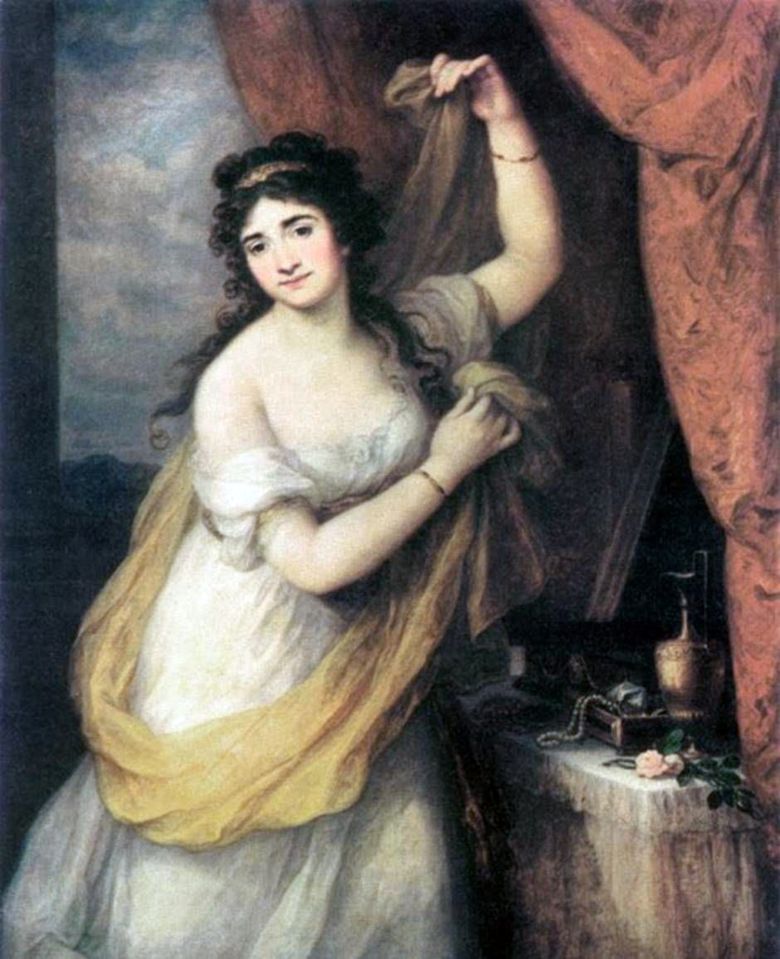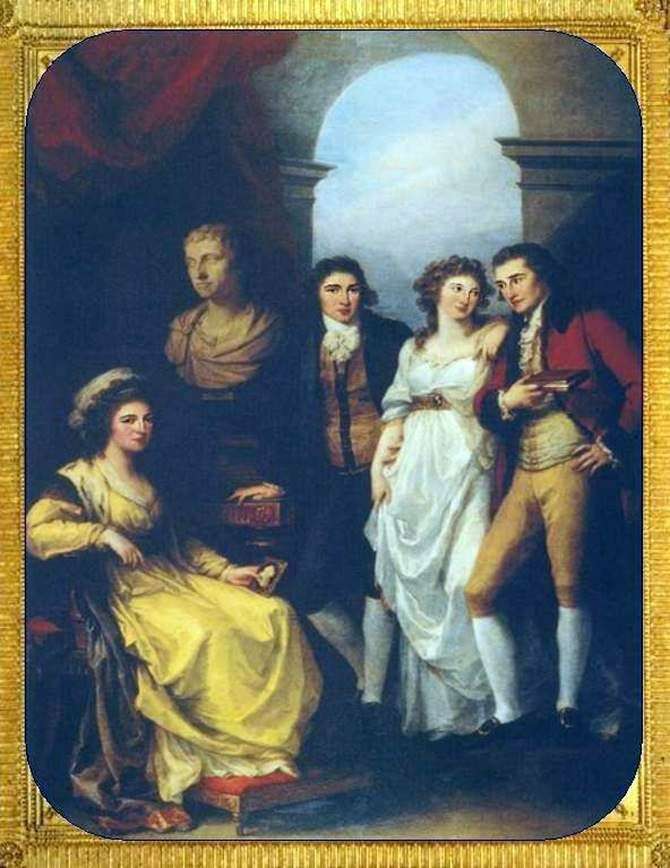
Kaufmann’s painting depicts Princess Esterhazy, the wife of the Austrian Field Marshal and Hungarian sovereign Prince Nikolai Esterhazy.
Esterhazy-Galanta is a powerful and rich family of Hungarian magnates; according to legend, it leads from Attila; according to documentary data, is known since 1238. The founder of the power of the house is Nikolai Esterhazy, the forefather of the Forhenstein line, the Hungarian palatine.
Most known:
1) Prince Paul Esterházy, Count of Frakno and Bereg, Austrian Field Marshal, Hungarian Palatine; took part in 1683 in the liberation of Vienna and in 1686 in the capture of Ofen from the Turks; in 1687 received the title of the imperial prince, the right of coinage with his image and the right to erect in the nobility.
2) Prince Nicholas Joseph Esterhazy, Count Forhenstein, Austrian Field Marshal, grandson of the previous; distinguished himself in the war for the Austrian inheritance and in the Seven Years’ War; known as a philanthropist; Haydn and Pleyel came out of the music school founded by him in Eisenstadt.
3) Prince Nicholas Esterhazy, Austrian Field Marshal, grandson of the previous; in 1809, exposed the corps of volunteers to help Austria in response to the proclamation of Napoleon, who offered him the electoral crown of Hungary. The possessions of the princely line of Esterházy’s house in the 19th century consisted of 29 estates with 60 towns and 414 villages.
 Princess Esterházy by Angelika Kaufman
Princess Esterházy by Angelika Kaufman Portrait de la princesse Esterhazy – Angelika Kaufman
Portrait de la princesse Esterhazy – Angelika Kaufman Princesse Esterhazy – Angelika Kaufman
Princesse Esterhazy – Angelika Kaufman Retrato de la princesa Esterhazy – Angelika Kaufman
Retrato de la princesa Esterhazy – Angelika Kaufman Princesa Esterhazy – Angelika Kaufman
Princesa Esterhazy – Angelika Kaufman Family portrait of E. P. Baryatinskaya by Kaufman, Angelika
Family portrait of E. P. Baryatinskaya by Kaufman, Angelika Countess Anna Protasova with her nieces by Angelika Kaufman
Countess Anna Protasova with her nieces by Angelika Kaufman Portrait of E. V. Skavronskaya by Angelika Kaufman
Portrait of E. V. Skavronskaya by Angelika Kaufman